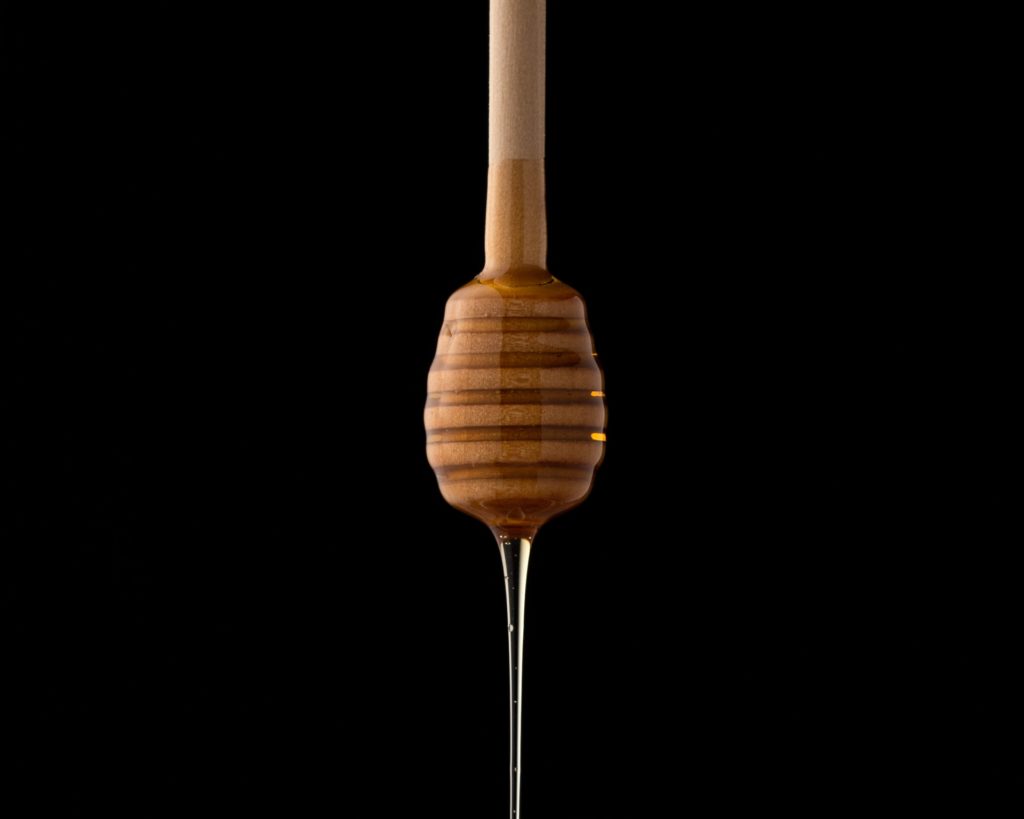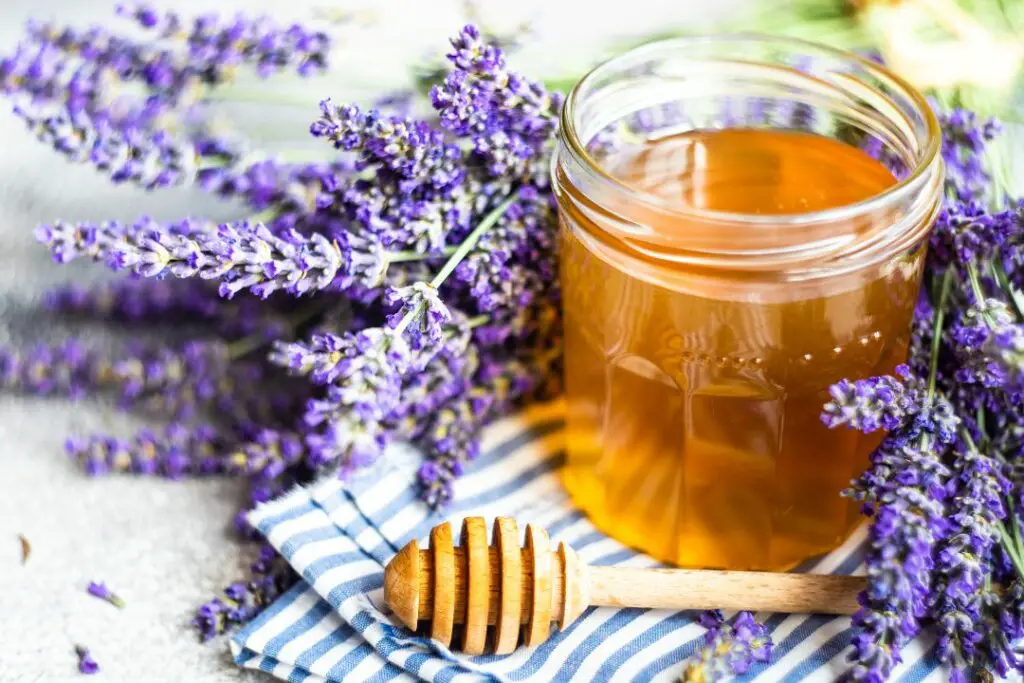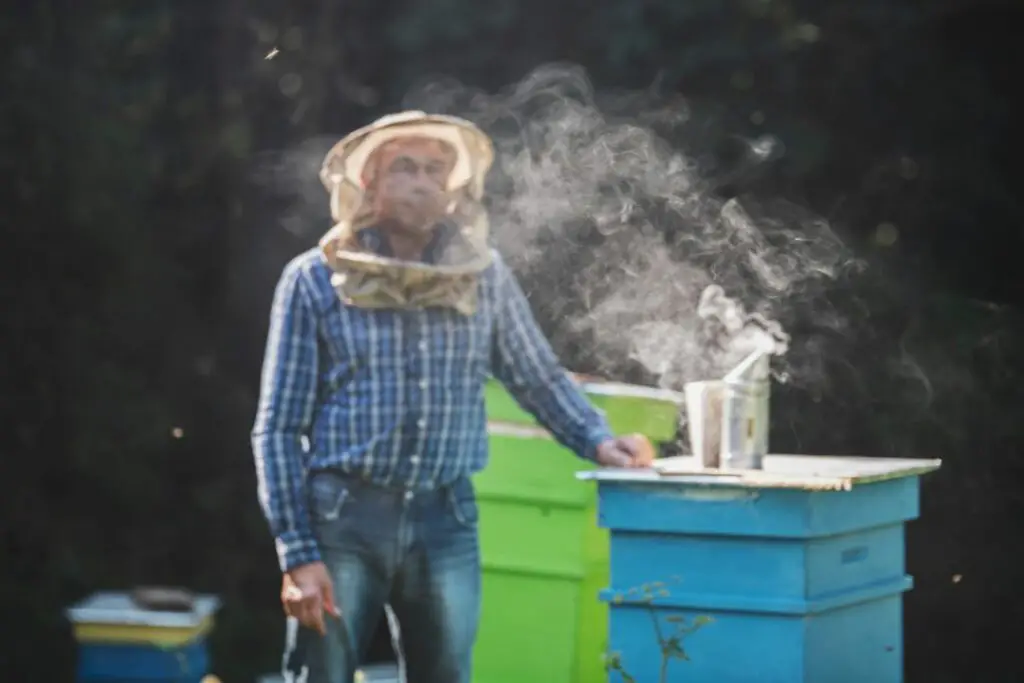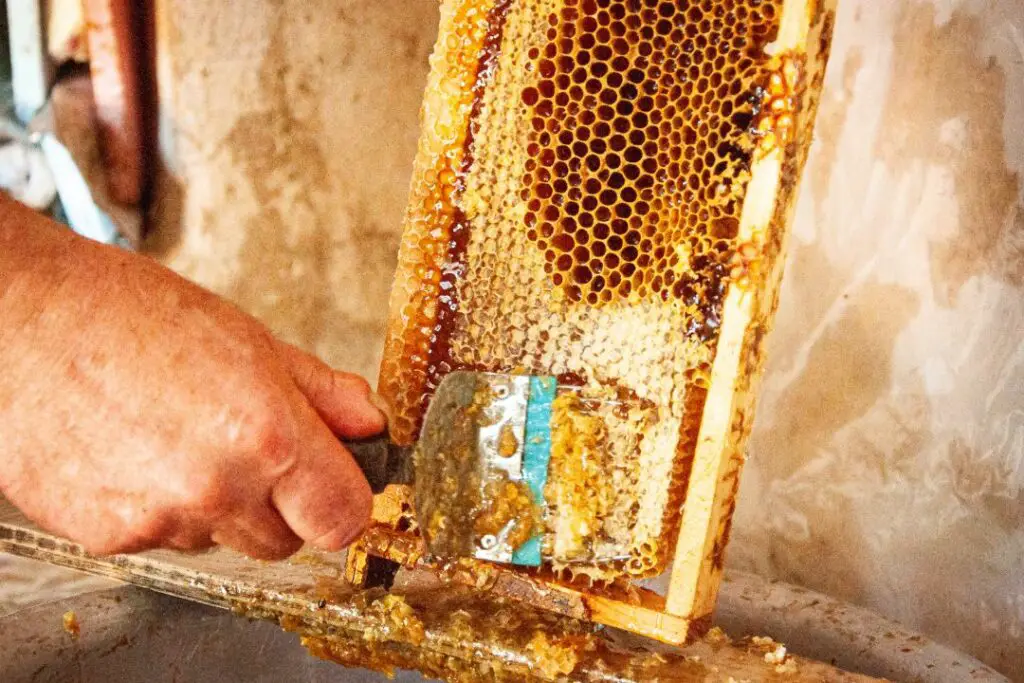Last updated on January 5th, 2024 at 03:59 pm
You’re in the supermarket, and you happen to be wandering down the spreads and jams aisle. The honey section greets you like a candy store, with images of bees flitting between hives, flowers blowing in the wind and happy beekeepers leaning on rustic hives.
But all is not well; marketing has genuinely infiltrated the honey industry, and the image of where your honey comes from may not match the reality.
Honey is delicious and nutritious, but the honey you buy at the store may not be natural. Many well-known honey brands are just sugar syrup with added chemicals.
In a world of real honey vs fake honey, where sugar concentrate is being pedalled as the work of bees, how do you know which honey to buy or how it was made?
Look no further; we’re here to cut through the jargon and help you make an informed decision about the honey you consume.
What Is Real Honey?
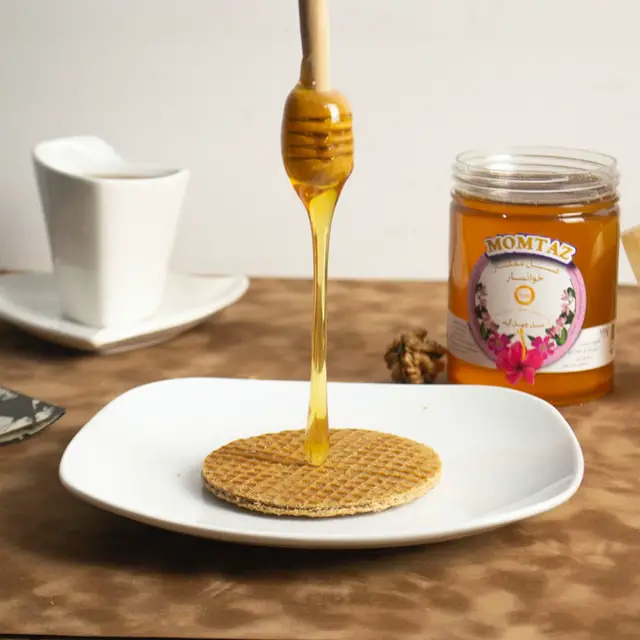
Real honey is simply honey in its unprocessed form. Real, raw honey is not refined in any way. It’s not heated. It’s not pasteurized, filtered or diluted with water or any other substance to make it into something else.
This means that real honey has all of its nutrients intact and in its natural state and is undoubtedly the best honey in terms of its taste and health benefits.
When it comes to bee products and produce, you can’t get any closer to unprocessed than raw honey extracted directly from the hive.
It’s important to note that some producers will use tiny amounts of filtration to remove debris like insects and leaves; honey treated in this manner is still considered natural.
Also, some real/raw honey may need light heating to reduce its viscosity and allow jarring or bottling; this still constitutes real honey.
Want to help bees on the go?
Don’t miss our handy bee revival kit that sits neatly on your keys, handbag or rucksack so you’re always ready to save a bee in need.
What Is Fake Honey?
Fake honey is a mixture of sugar syrup and honey. It’s cheaper to produce than real honey since it takes less time and energy and is considerably diluted.
Fake honey is not harmful to your health; however, it isn’t the same as real honey in terms of nutritional value or benefits to health.
Real raw, unprocessed local honey can help with allergies and overall health. Find out more about why honeycomb is good for you here.
It contains pollen particles that boost immunity by stimulating the immune system through exposure to allergens which helps prevent allergic reactions (allergies are your body’s immune response).
On the other hand, fake honey doesn’t contain any pollen particles since they’ve been filtered out during processing which makes fake processed store-bought “honey” ineffective at reducing the symptoms of allergies.

Fake honey vs Real Honey?
Bees make real honey. It’s a natural sweetener with many health benefits, including antibacterial and anti-inflammatory properties.
The different types of real honey are determined by the type of flower the bees pollinate to make it.
Fake honey, on the other hand, isn’t made by bees at all.
Fake or artificial honey is sometimes called “honey syrup” or “table syrup”, but it’s just sugar water with an added flavour and colour designed to imitate real honey.
The fakest honey contains high fructose corn syrup (HFCS) as its main ingredient; this is why they’re cheaper than pure honey from your local farmer’s market because they’re just sugar water!
Want to learn more about honey? Check out our short read on can you freeze honey?
Are Real Honey & Raw Honey The Same Thing?
Real honey and raw honey are often used interchangeably, but the two are different. Raw honey has not been treated in any way—it’s simply unprocessed and unheated. So, for example:
- It’s not pasteurized (heat is used to kill bacteria). This can lead to a few side effects, like decreased enzyme activity or increased moisture content due to evaporation from heating.
- It’s not filtered or strained through fine mesh filters like other types of honey (which may remove pollen).
- It’s not homogenized or blended with other honey before sale. So you’ll get different flavours depending on which local flowers were pollinating when your specific batch was harvested!
Real honey will be processed but in a very minimal fashion. This typically means some filtering to remove debris and light heating to make the honey easier to work with.
Neither of these will reduce the nutritional benefit of honey and will be conducted in a honey house close to managed hives.
How is Fake Honey Made?
Commercial honey production is a big business. It’s a global commodity.
Commercial harvesting and packaging of honey is done in many parts of the world and then sold as an ingredient in other foods and as a sweetener.
The United States produces more than 1 million tons of commercial honey each year—almost half of all the honey produced worldwide.
This makes it one of Earth’s biggest producers and exporters, alongside China and Argentina.
*Additional reading – Get the complete picture of why commercial honey harms bees.
Filtration
Commercial honey filtration is a process by which honey is filtered to remove any impurities. The honey is filtered through a series of filters, usually with different mesh sizes, and each one removes smaller and smaller particles.
This allows the beekeeper to get a finished product free of dirt, dust or any other foreign matter that may have found its way into the hive.
Commercial filtration is typically more intensive and effective than filtration carried out by amateur beekeepers, but this also leads to some of the pollen being removed.
Pasteurisation
Another popular method of making honey is the process called water dilution pasteurisation.
This is used to extend the shelf life of honey, making it easier to spread and use on food. It’s also used to make sure that the product is 100% natural and not adulterated with other products that would be harmful.
The process involves heating up the honey at about 60°C for 15 minutes or so. All bacteria will be killed off; however, some of the flavours are lost!
Real vs Fake Honey – How to Tell If Honey Is Real
Now you’re equipped with all the information you need; let’s look at some ways you can test honey to see if it’s real or an impostor.
The real honey vs fake honey water test
If you’re looking to test your honey, here’s what you should do:
- Put a spoonful of honey in a glass of water. If it floats and begins to dissolve, it’s fake. You’re looking at real honey if it sinks to the bottom of the glass in a single lump.
Paper towel test
The paper towel test. This is another easy way to tell the difference between real honey and fake honey.
- Place one drop of honey on a piece of paper towel.
- Observe the behaviour of your drop of honey after you place it on the surface of your paper towel.
- Fake honey will be absorbed into the fabric, leaving little to no trace due to its high water content.
- If your drop does not absorb into the fabric, it’s likely real honey.
Crystallization
Real honey crystallizes. It’s true. If you see crystals forming in your honey jar, it’s a sign that it is pure, unadulterated and high-quality.
Honey that never crystallizes has likely been heated to high temperatures during processing to prevent this from happening.
Since heat destroys the enzymes in honey and kills beneficial bacteria, it makes sense why vendors would want to keep their products as close to raw as possible. If you see crystals in your honey jar, they’re there because it’s real!
Flame test
Another way to check if your honey is real is by using a flame test. Take a spoonful of honey and place it on a plate. Using a lighter, heat the surface of the honey until it burns or melts. If it burns and doesn’t liquefy, it’s not natural honey!
However, if it melts immediately after you heat it up, you’ve got some good old-fashioned homemade goodness right there!
Thumb test
Last but not least, the thumb test is a simple test for determining whether or not the honey you are about to put in your tea or spread on your toast is real or fake.
Take a small amount of honey from the jar and apply it to your thumb.
If it hardens up, then it’s real! If it remains sticky, you may have been duped by an evil impostor (or picked up some low-quality honey at the grocery store).
Conclusion
How can you tell if the honey you are buying is fake?
The easiest way is to find a reputable brand specialising in raw, chemical-free honey. This will save you a lot of time, money and effort.
This article has been written to help you understand the difference between real honey and fake honey. It is not an easy task, but if you take your time and do your research, you should be able to tell the difference.

